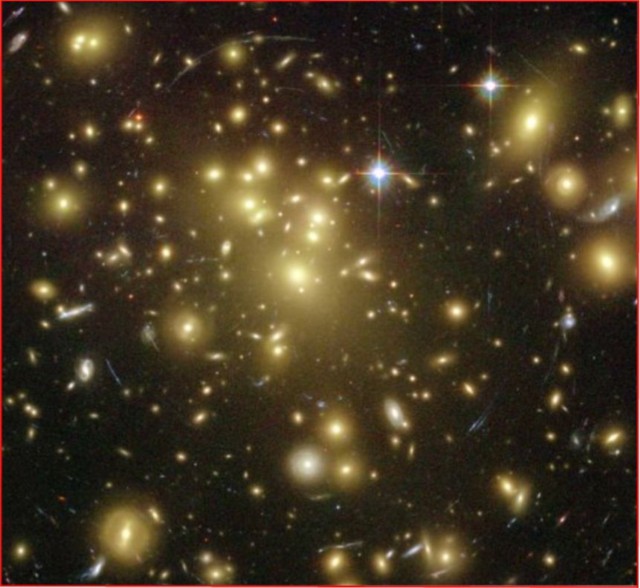
home •
about •
essential guide •
picture of the day •
thunderblogs •
news •
multimedia •
predictions •
products •
get involved •
contact

Credit: G. Illingworth (UCO/Lick), ACS Science Team, ESA, NASA
pic of the day
archive
subject index
abstract
archive
Links:
Society for
Interdisciplinary
Studies
Aug 22, 2005
Gravitational
Lensing Used As Excuse Again
Recognizing the electrical behavior of plasma restores sensibility to a science dominated by “dark ideas” about undetectable (and therefore unscientific) matter.
Over 99% of the matter in the universe is in the form of plasma—aggregates of matter that contain charged particles. The charged particles move in response to electromagnetic forces, which can overpower gravity billions of times over. Through collisions, the charged particles carry neutral particles along with them. A very few charged particles can shape large amounts of matter into characteristic forms such as filaments, arcs and toruses. The electric currents flowing through plasma can heat it to high temperatures and accelerate particles to x-ray and cosmic-ray energies.
Unfortunately, the established institutions of astronomy are willfully blind to the existence of electricity in the universe. And so they must try to explain plasma phenomena with the weak force of gravity. Because there isn’t enough matter in the universe to accomplish this, astronomers have had to fantasize invisible, “dark” matter and energy.
In this image of Abell 1689, a cluster of small, faint galaxies in the Virgo Cluster, active galaxies have generated arcs of plasma with high redshifts, indicative of a young age for the highly excited material. Because conventional theory requires redshift to be solely a measure of distance, conventional astronomers are forced to believe that the arcs represent objects that are much farther away than the cluster. The only way to accomplish this with gravity is to have the cluster act as a lens that distorts objects behind the cluster as it warps those objects’ light around the cluster.
The caption to this image that appeared in the Astronomy Picture of the Day admitted: “The power of this enormous gravitational lens depends on its mass, but the visible matter, in the form of the cluster's yellowish galaxies, only accounts for about one percent of the mass needed to make the observed bluish arcing images of background galaxies. In fact, most of the gravitational mass required to warp space enough to explain this cosmic scale lensing is in the form of still mysterious dark matter.”
Because they refuse to see that 99% of the visible matter is plasma that defies their dogma, conventional astronomers must pretend that 99% of the matter is invisible but “dogmatically correct.”Contributed by Don Scott
EXECUTIVE EDITORS:
David Talbott, Wallace Thornhill
MANAGING EDITOR:
Mel Acheson
CONTRIBUTING EDITORS: Michael Armstrong, Dwardu Cardona, Ev Cochrane,
C.J. Ransom, Don Scott, Rens van der Sluijs, Ian Tresman
WEBMASTER: Michael Armstrong
Copyright 2005: thunderbolts.info